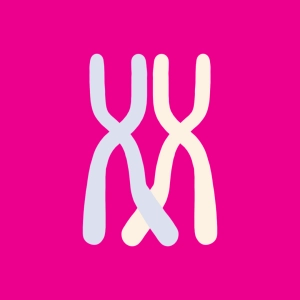 Crossing Over
Crossing Over
This animation represents a simplified example of gamete formation after one meiosis, in the first case without crossing over, and in the second case with crossing over.
In this example, the nucleus of the diploid cell in the haploid gametes contains a pair of homologous chromosomes. Two genes, A and B, are located on this chromosome. They represent each of the two different forms (alleles) (A1 and A2 for gene A; B1 and B2 for gene B). The two homolgous chromosomes bear different alleles (the individual is heterozygous for these two genes).
The blue chromosome is from paternal origin, and the red chromosome is from maternal origin.
During meiosis without crossing over, the alleles of two genes located on each chromosome migrate together and stay attached. We obtain, therefore, gametes that are 100% parental, subdivided into two types of gametes from the point of view of allele separation.
If crossing over occurs between the two genes, an exchange of alleles is produced between the homologous chromosomes. We therefore obtain 50% parental gametes and 50% recombined gametes, further divided in four types of gametes from the point of view of allele separation.
Crossing over is the cause of larger genetic variability.
